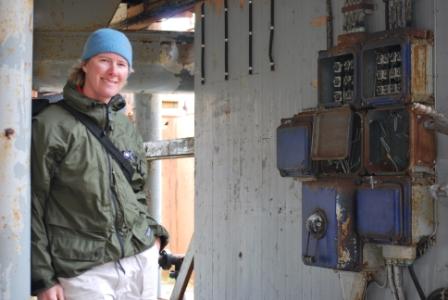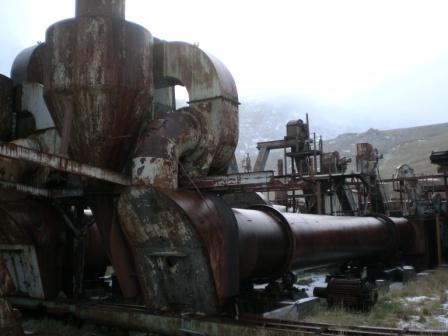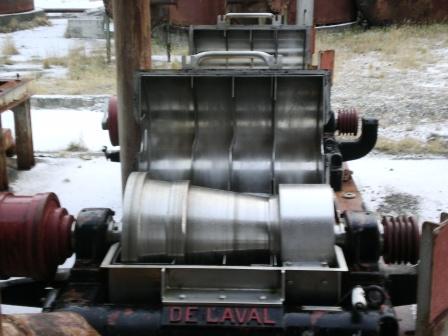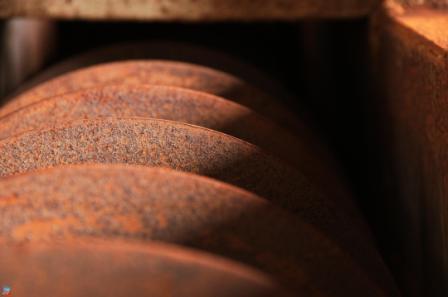Meat Cookery in the plant

This is taken in the building known as the plant which contains the meat cookery which is larger than the blubber cookery. Several alternative or parallel processes were involved varying from one station to another in the plant. The extraction of oil from meat is more complicated than from blubber. The meat was sent in elevators up into the meat loft and into the top of the cookers after being cut into pieces.

Originally there was 16 pressure meat cookers that were replaced in 1956 with two rotary 24 ton cookers and one 15 ton cooker which pressed the oil out of the meat. The oil was blow off to separators from the cooker and the solid remains transported to the meal processing plant. The meat was pressed in a press that extended over four floors allowing input from the meat loft, bone loft and ground level platform. The meat on the top level dropped from conveyors onto rotary cutters to the third leve where it was distrubuted on another conveyor into five holes leading to the second level.

The meat went through five tubes 10m+ long being heated and screwed through onto vibrating screens.

Any liquid passing throught the screens went to centrifuges (beautifully made out of high quality stainless they still spin freely today) removing solid particles and onto a seperator plant.

The solids on the screen went to the ground floor where it went through screw presses.
4 Responses to “Meat Cookery in the plant”
-
Hi Ashley
I picked up a book in Lerwick museum the other day called “Shetland Whalers Remember”, & it is a collection of stories from the men who went south.I have just read a bit about the “kettle emptier”. “When the meat was cooked in the tanks you opened the door and raked it out into your wagon”, so presumably the tanks you are discussing here.
He also discusses “the Chamber of horrors” & the fact that one could not see what one was doing because of the steam from the hot meat……etcIt has all sorts of stuff about the jobs, the filth, the accidents & of course being torpeedoed on the way down as many stories are during the 2nd world war.
“We were told that in Grytviken someone was walking along to the whaling station & he was buried alive in a snowdrift by an avalanche”.Yes, it was a gory dangerous job, disaterous for the whales, but still makes fascinating reading!
-
greetings Mark, Now I have one more worry about Ashley, her brother is about to single hand a sail boat race, this is all too too much for one mum. Enjoyed your comments and glad you enjoy Ashleys blog . Your son showed me his experiments with seal poo! Regards, Ashleys mum
-
hi (Ashley’s) Mum
Of course you visited SG so have actually seen the place which must have been great. Glad you met Ali & know what he does; messing with poo is actually a fascinating subject!
Reading the blogs is brilliant & helps keep us in touch with what is going on; & Ashley is a very good blog keeper so thanks to her for keeping it going on such a regular basis.
Best wishes
mark -
Mum no need to get your nickers in a twist!! If there is avalanche risk the track is closed so we would have to take the boats to Grytviken instead. We wear avalanche transcievers and probes. If you teach your kids to be independent what do you expect….

